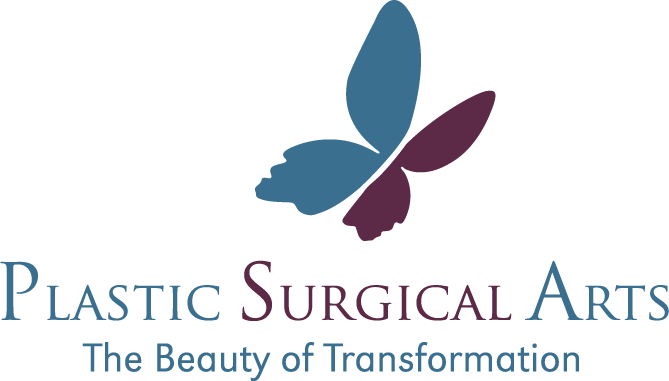
Brachioplasty (Upper Arm Reduction)
-
Brachioplasty is a type of surgery that involves tightening sagging skin and supportive tissue to improve the appearance of your upper arms. Also known as an arm lift, it improved the tone and definition of your upper arms by reducing fat pockets and smoothing remaining skin.
This procedure removes any excess fat and skin that is wrinkled or sagging from the underarm region from the armpit to the elbow.
-
Brachioplasty surgery may be for you if you have reduced skin elasticity due to aging or genes or you’ve recently lost a lot of weight. It is often done after a person has had weight-loss surgery.
A large amount of weight loss can leave you with skin-folds that may cause additional issues such as general discomfort, inflammation and rashes, skin infections, problems with hygiene and poor self-esteem.
-
During the consultation, you should be prepared to discuss your comprehensive medical history. Relevant information includes current and previous medical conditions, drug allergies, previous medical treatments, pregnancy history and current medications. Your surgeon’s recommendation is based largely on the complete and accurate information you provide during this initial visit.
You can expect your surgeon will examine your body and photographs will be taken for your medical record. Your surgeon will consider factors such as the size and shape of your arms as well as the elasticity of your skin.
Your current weight, along with your plans to gain or lose weight in the future are both factors in evaluating you for underarm reduction surgery. Your Plastic Surgical Arts surgeon may recommend that you stabilize your weight prior to undergoing surgery.
-
The underarm reduction surgery may be performed at several locations in Lincoln. Check-in is typically 1 1/2 to 2 hours prior to your surgery time. Prior to the procedure, the surgeon will speak with you briefly to discuss the procedure and make any necessary markings. This procedure requires the use of a general anesthetic; therefore, you will be asleep during the surgery. The use of monitors during the surgery is imperative to check your vitals and oxygen levels throughout the procedure.
Once the surgery is completed, you will be required to remain in the recovery area where you will continue to be closely monitored. You should expect to have your upper arm region either wrapped in gauze dressings or in a garment. In most cases, patients are released after a few hours, although some patients may stay overnight in the hospital or surgical facility.
Do not submerge the incision in water until it is completely healed; this includes a bathtub, Jacuzzi and swimming pool. A shower may be taken the morning after the surgery, and we encourage you to have someone available for assistance if needed. Please keep your dressings clean and dry and it is permissable to change them as often as necessary.
-
The results of aesthetic arm surgery are long lasting, however the results may be affected by your heredity and lifestyle factors. At some point the skin laxity, along the fine wrinkling of the arm area may return, as the skin will continue to age. The loss of muscle tone can cause additional sagging of skin in the upper arm region.
Even though the aging process continues, patients are generally happy with their appearance for many years following underarm reduction surgery. Some patients find that they may want to make additional improvements at a later time.
-
TO PRINT THESE INSTRUCTIONS CLICK HERE
WHAT YOU CAN EXPECT:
Moderate discomfort-use pain medication as needed or Ibuprofen / Tylenol as directed. Moderate swelling.
Black and blue discoloration.
PAIN CONTROL:
Take your pain medication, as instructed, until your pain lessens.
Always take your medication with food in your stomach.
Do not drive or operate equipment while on your pain medication.
Do not drink alcohol while taking prescribed pain medications.
Someone needs to stay with you the first night home after surgery.
You may apply ice cold compresses to the inner sides of your arms during the first 24 hours after surgery.
Narcotic pain medication can cause significant issues with constipation. Please start using a stool softener the day before surgery and daily there after until normal bowel function returns.
If having pain control issues while taking prescribed medications, please contact our office at 402-483-2572.
DRESSING CARE:
You may shower the next day following your procedure.
No submerging the surgical site under any water until incision is completely healed.
Your physician may discuss massage to improve scar quality at the appropriate time of your healing process.
Avoid exposing scars to the sun for at least one year from date of surgery.
Always use a sunblock with a SPF 30 or greater.
CONTACT YOUR PHYSICIAN (402.483.2572) IF ANY OF THE FOLLOWING OCCUR:
A temperature greater than 101 degrees F.
Redness, swelling around the incision site.
Severe pain not responding to pain medications.
Persistent, profuse bleeding or drainage.
If any other question or problem arise. When drain output is 30cc or less (per each tube) for a 24 hour period.
ACTIVITY:
Arrange to have someone spend the first 24 hours with you.
Bedrest for 24 hours.
Avoid smoking for at least 3 weeks before and after surgery. Nicotine constricts the small blood vessels needed to heal your wounds and could lead to infection and skin loss.
No alcohol for 5 days after surgery or while on narcotic pain medication.
You may drive a car with power steering after two (2) weeks if you are off narcotic pain medication and you can stomp on the brake and crank the steering wheel without pain.
Avoid sports and strenuous activities for 4 weeks at least.
